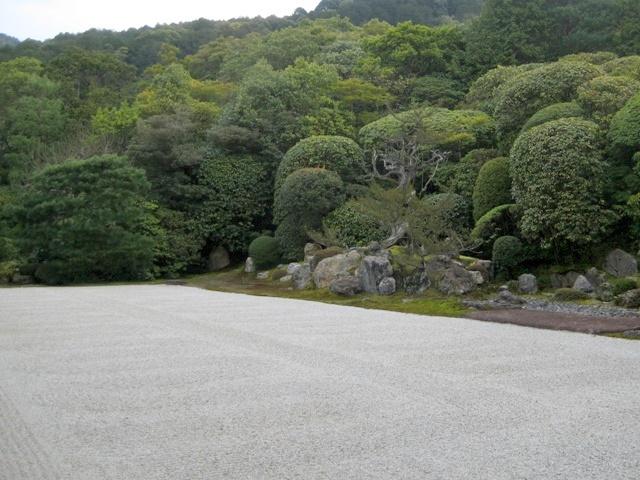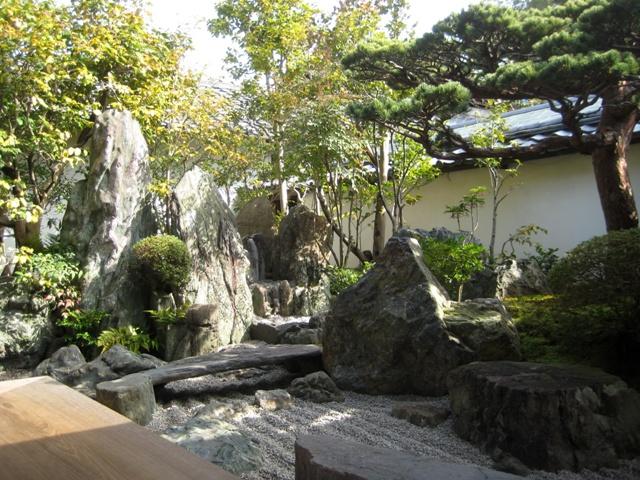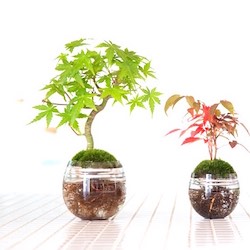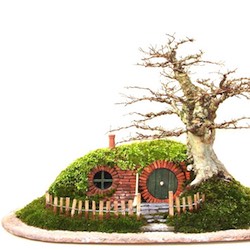日本庭園 - Japanese gardens are often part of Buddhist monasteries and Shinto shrines and therefore deeply rooted in religion. The importance of nature in Shinto beliefs is resembled in garden elements such as lakes, trees and rocks; Buddhist elements include mountains, stone groupings and seas.
Similar to Bonsai, many elements from Japanese gardens are likely to be imported from China and Korea during the Asuka period (538-710AD). During the Heian period (794-1185AD), many standards for contemporary Japanese gardening were established.
Typical features of Japanese gardens
The gardens are normally laid out around an architectural structure (like a house, temple or tea pavilion) from which the surroundings can be enjoyed by simply sliding open the paper doors. This way the interior freely flows into the exterior. Besides a main structure several elements can be spotted in most gardens:
Water (mizu), often in the form of a lake, pond or stream or otherwise in symbolic form (like raked gravel).
Rocks (ishi), solitary or placed in groups, are deeply rooted in Shinto beliefs.
Islands, depending on the size of garden these can range from a single rock to actual islands. In dry landscape gardens rocks are used to depict islands.
Borrowed scenery (shakkei), using surrounding mountains in the garden’s design.
Sand or pebbles, applied to make the grounds hospitable to the spirits.
Bridges, either wooden or stone bridges or stepping stones to cross waters.
Trees, often very old pine variants that depict ancientness.
Ornaments (tenkebutsu), like stone lanterns and basins can be found in many sizes and shapes.
Waterfalls, either in single or multiple cascade or depicted in dry landscapes by stones.
Japanese garden styles
Several styles can be classified:
Karesansui (枯山水) means dry landscape garden and is influenced strongly by Zen-Buddhism. Carefully raked sand and rocks represent ponds, streams, islands and mountains.
Kaiyu-shiki (strolling gardens) were designed to enjoy from a path around the garden.
Kanshoh (sitting gardens) centered around a residence from which the plot can be enjoyed.
Kyoto is home to an exceptionally large number of Japanese gardens, with highlights including Ginkaku-ji, Konchi-in, Kennin-ji and Ninna-ji. Closely related to Japanese gardening are poetry, literature and tea ceremonies. Read more about Bonsai and Japanese gardens in Japan here.






